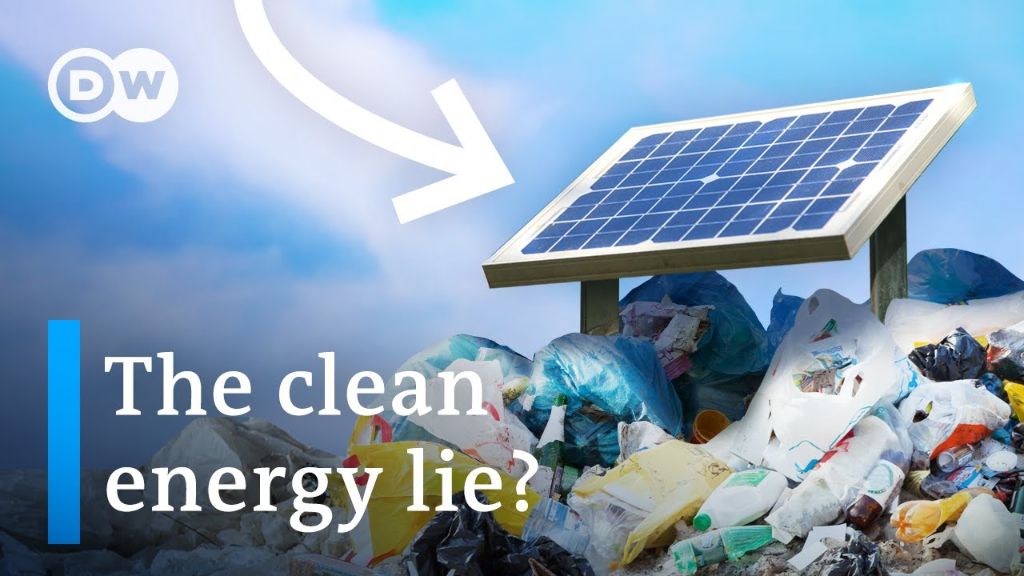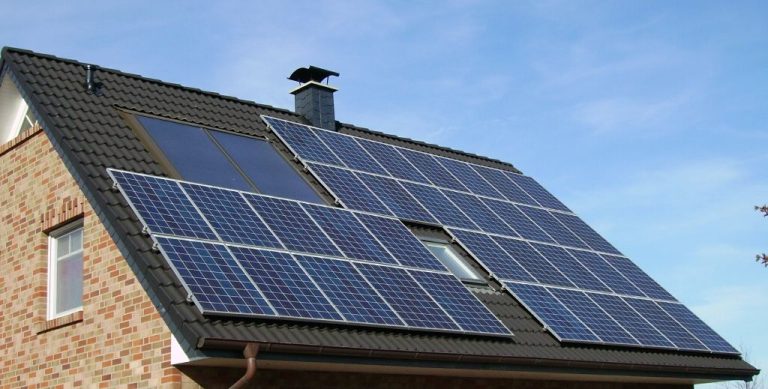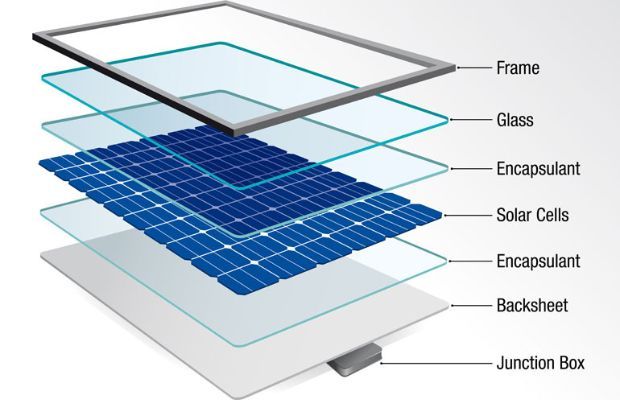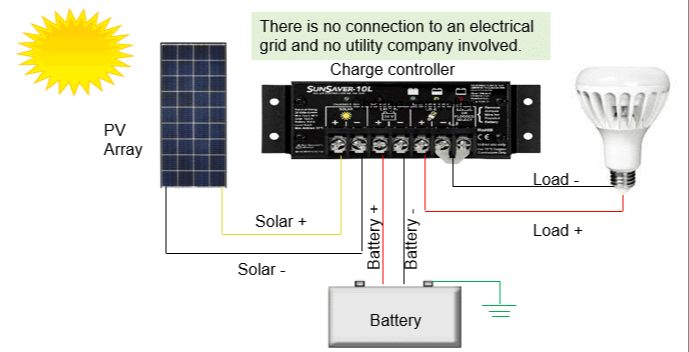Is Solar Really Clean Energy?

Solar power is often viewed as a clean and renewable energy source that can help combat climate change. The sun’s energy is virtually limitless and harnessing it does not directly produce greenhouse gas emissions. However, there are some environmental concerns related to solar power that should be considered. The manufacturing of solar panels uses toxic materials, and large solar installations can impact land and water ecosystems. While solar energy is clearly better than fossil fuels, it may not be 100% clean and green.
Solar Panel Manufacturing
Producing solar panels requires significant amounts of energy and rare earth metals that have their own environmental impacts (Ecowatch). The manufacturing process involves mining silica and several scarce minerals such as tellurium and indium. Extracting these materials affects land use and generates mineral waste. Producing the purified silicon for solar cells also requires large amounts of electricity, often from fossil fuels. There are concerns about the carbon emissions and pollution from the manufacturing and transportation of solar panels.
However, analysis shows that the net energy and emissions from solar panels is still significantly lower than fossil fuel sources over the life cycle of the panels. Improvements in manufacturing and panel efficiency are also reducing the environmental footprint (Environment & Energy Publishing). Responsible recycling and disposal of panels at end-of-life can further minimize the impacts.
Land Use
Utility-scale solar farms require large amounts of land, often hundreds or thousands of acres. According to Solar Energy Development Environmental Considerations, the clearing and use of large areas of land for solar facilities can adversely affect native vegetation and wildlife in many ways, including habitat loss. The development of solar farms has raised concerns about the impact on ecosystems and wildlife.
A 2013 report from the Union of Concerned Scientists titled Environmental Impacts of Solar Power notes that depending on their location, larger utility-scale solar facilities can lead to land degradation and habitat loss. The land clearing required for solar facilities removes vegetation and can fragment habitats.
While solar energy generates clean power, large-scale solar developments have an environmental cost in terms of land use. Proper site selection, habitat protection plans, and restoration efforts can help mitigate the land use impacts. Overall, more research is needed to fully understand solar farms’ effects on ecosystems over time.
Toxic Materials
Solar panels contain some toxic materials like lead and cadmium that must be disposed of properly. According to the EPA (“End-of-Life Solar Panels: Regulations and Management”), the amount of lead in a typical solar panel is similar to the lead in the cathode ray tubes of computer monitors and televisions. Cadmium telluride panels in particular contain cadmium, a toxic heavy metal. When improperly disposed of, these materials can leach out and contaminate the environment.
Whether a solar panel is considered hazardous waste at the end of its life depends on how much cadmium, lead, and other toxins leach out when tested with an acid (“Solar Panel Frequent Questions”). Some solar panels exceed the regulatory threshold for these toxic substances and must be managed as hazardous waste. Proper end-of-life disposal is essential to preventing the release of toxic materials into the environment.
Water Use
One concern with solar power is the amount of water used, especially for concentrated solar thermal plants. These plants use mirrors or lenses to concentrate sunlight to heat a transfer fluid, which creates steam to run a turbine and generate electricity. A significant amount of water is needed for cooling in this process. According to the Solar Energy Industries Association, the Nevada Solar One parabolic trough plant consumes 850 gallons of water per MWh on a 360-acre site near Las Vegas, or about 300,000 gallons per acre per year. https://www.seia.org/initiatives/water-use-management
Research estimates solar thermal water use around 800 gallons per megawatt-hour, comparable to nuclear power plants. Modern natural gas combined-cycle plants can use approximately half as much. https://projects.research-and-innovation.ec.europa.eu/en/projects/success-stories/all/water-consumption-solution-efficient-concentrated-solar-power New technologies for dry cooling and water conservation can help reduce water usage for concentrated solar power. Photovoltaic solar panels use negligible water once installed.
End-of-Life Disposal
One downside of solar panels is that they have a limited lifespan of around 20-30 years. While making solar panels is getting cleaner, proper disposal and recycling at end of life is still an important issue. If not disposed of properly, old solar panels can leach toxic materials like lead into landfills.
Currently, solar panel recycling processes need improvement. Typical solar panels are made of glass, polymer, and aluminum framing, which are recyclable. However, the solar cells inside contain valuable but potentially hazardous materials like silver, copper, and silicon that require special handling. Proper solar panel recycling recovers over 90% of materials for reuse.
Facilities specifically dedicated to solar panel recycling are starting to emerge to address the coming wave of expiring panels. However, capacity needs significant expansion. It’s estimated that by 2050, there could be up to 78 million tons of solar panel waste globally. More recycling infrastructure, proper regulations, and producer responsibility policies are necessary to manage this waste and avoid environmental contamination.
While recycling processes require more development, reusing functioning solar panels is an even better end-of-life option. Companies are finding ways to test used panels and reinstall ones still operating efficiently, extending their usable lifespan. With some forethought, solar can expand without leaving behind large waste streams.
Sources:
https://www.epa.gov/hw/solar-panel-recycling
https://www.santeecooper.com/global-news/2021/072021-How-to-Properly-Dispose-of-or-Recycle-Solar-Panels-and-Equipment.aspx
Positive Impacts
Once built, solar offsets fossil fuel electricity generation which reduces greenhouse gas emissions and improves air quality. According to the U.S. Department of Energy, the use of solar energy avoids the emissions of over 30 million metric tons of carbon dioxide per year in the United States, which is equivalent to taking over 6 million cars off the road. The emissions avoided would be even greater if more solar energy capacity is installed.
Solar energy systems require no fuel, produce no air pollution or greenhouse gases during operation, and reduce the problems caused by fossil fuels. According to the Solar Energy Industries Association, solar offset 23.7 million metric tons of carbon dioxide emissions in 2018 in the United States alone. This is the equivalent of taking 5 million cars off the road. As solar continues to expand its reach, the air quality benefits will increase.
In addition, solar photovoltaic systems require almost no water to generate electricity. This makes solar PV systems ideal for deployment in arid climates. The lack of moving parts in solar PV systems also reduces noise pollution.
Improving Sustainability
Research into more sustainable solar panel materials and recycling is helping to improve the sustainability of solar energy. For example, the U.S. Department of Energy highlights efforts to develop more environmentally benign manufacturing processes and increase solar panel recycling (1). One research study found that switching to more sustainable materials like organic polymers could reduce the PV industry’s environmental impact by up to 50% (2). Companies are also exploring more efficient recycling methods to recover valuable materials from old panels, though more progress is still needed on commercializing these technologies.
In addition, solar companies are adopting better sustainability practices like implementing cable recycling, utilizing terrain-following racking systems, and procuring panels with higher conversion efficiencies which require less land area (3). Overall, increased efforts on research, material choices, land use efficiency, and recycling can help improve the sustainability of solar technology.
Sources:
(1) https://www.energy.gov/eere/solar/solar-energy-wildlife-and-environment
(2) https://www.nature.com/articles/s41598-023-37386-5
(3) https://www.bv.com/perspectives/four-ways-to-increase-sustainability-on-your-solar-projects/
Policy Support
Government incentives play an important role in supporting the growth of solar energy and sustainability efforts. Many governments provide tax credits, rebates, and other financial incentives to make solar power more affordable and accessible to homeowners, businesses, and utilities.
For example, in the United States the federal government offers a 26% tax credit for installing residential and commercial solar energy systems. This incentive helps offset the upfront costs of adoption and makes the return on investment more attractive [1].
State and local governments also offer additional rebates, tax exemptions, and other programs to encourage solar installation. Policy incentives like these are critical to enabling the continued growth of renewable energy and reducing reliance on fossil fuels that contribute heavily to climate change.
Government support through initiatives like these highlights the environmental benefits of solar power and the importance of transitioning to cleaner energy sources. Solar-friendly policies incentivize sustainability while also providing economic opportunities and energy savings.
Conclusion
While solar energy does have some drawbacks in terms of manufacturing processes, materials used, land usage, and disposal, most lifecycle analyses have found solar to be more sustainable and cleaner than fossil fuel energy sources over the full lifespan. Solar emits far fewer greenhouse gases, air pollutants, and waste products than coal, oil, and natural gas. As solar technology continues advancing rapidly, many of the sustainability concerns are being addressed through improved manufacturing techniques, reduced material inputs, and better recycling methods. Continued policy support can also help encourage solar companies to further improve their environmental footprint through incentives or regulations. Overall, despite some valid criticisms, solar remains one of the most promising and quickly scalable paths to transitioning to a clean energy system and mitigating climate change risks.






